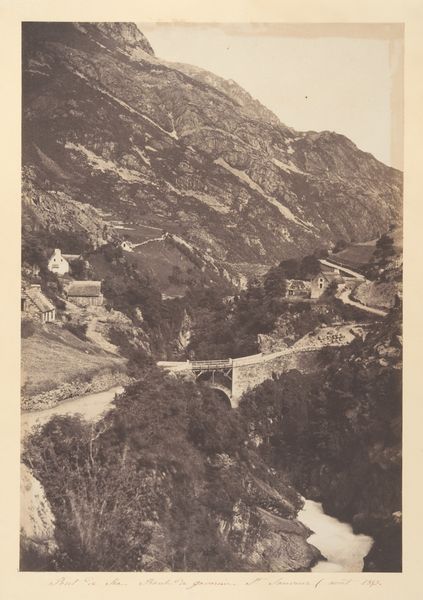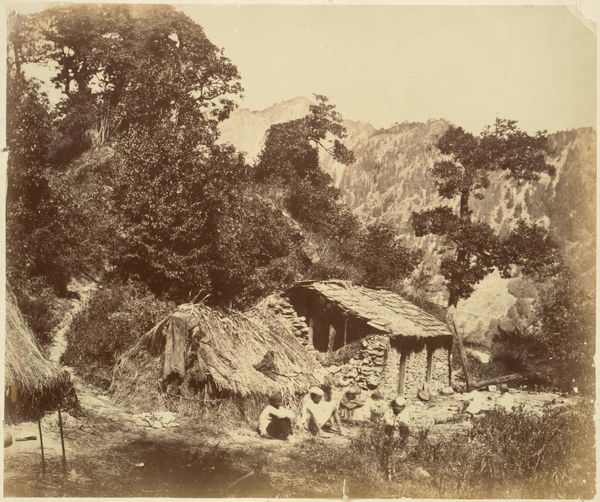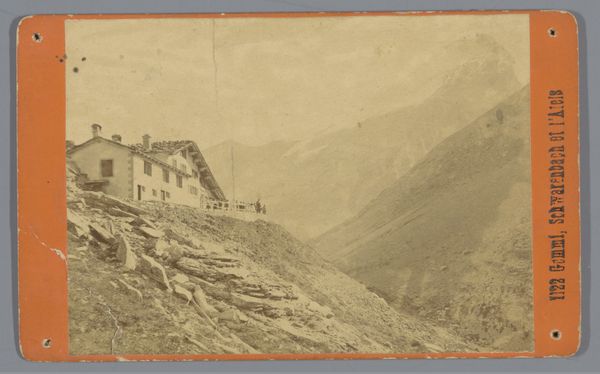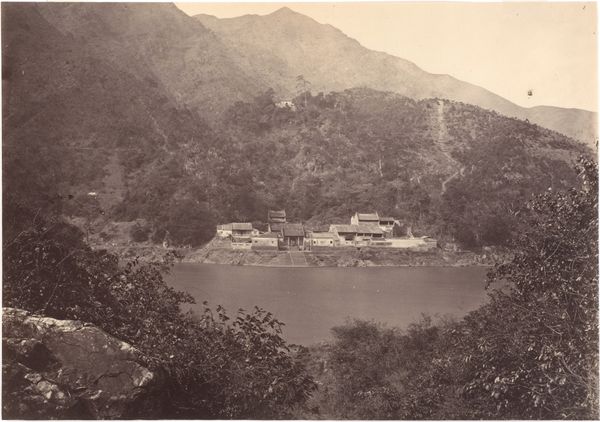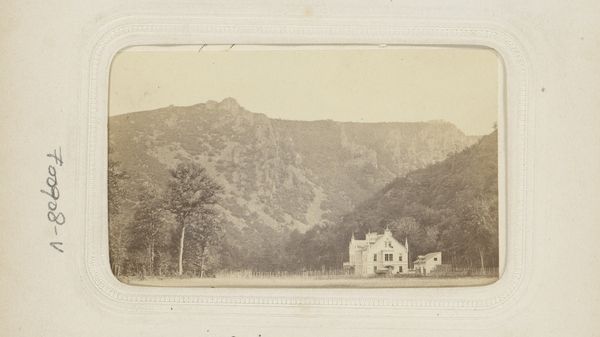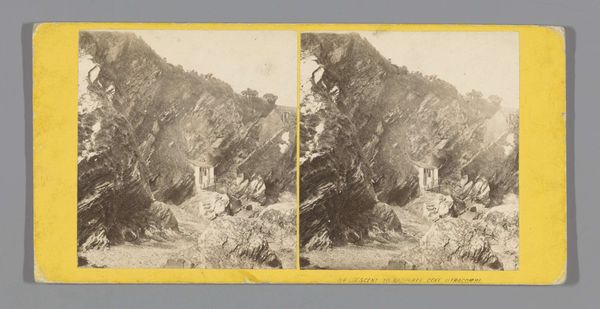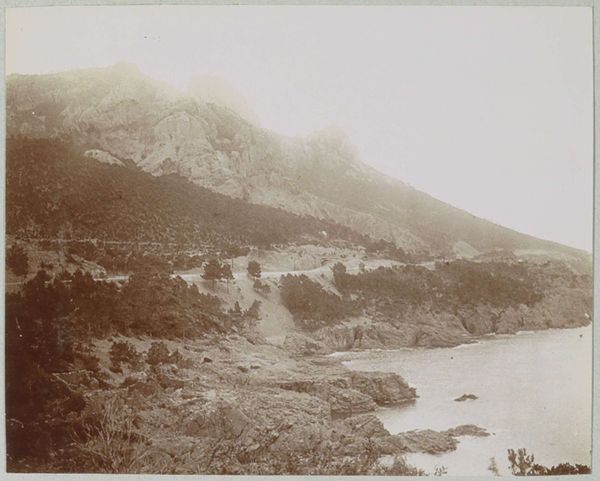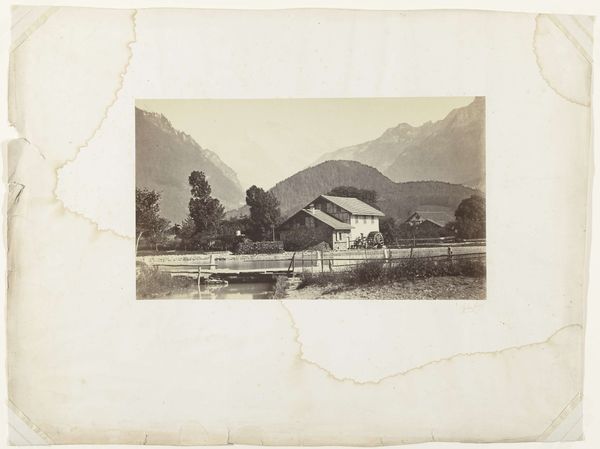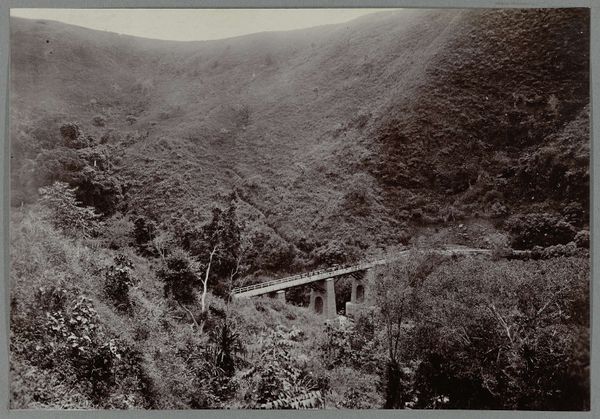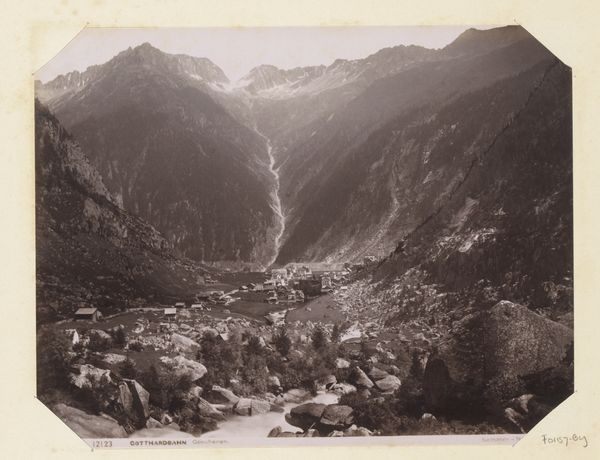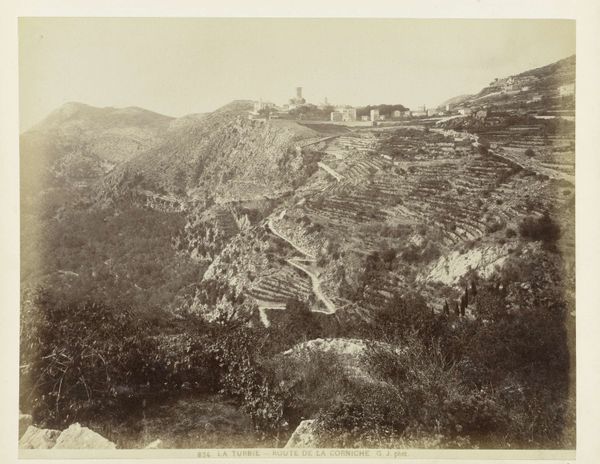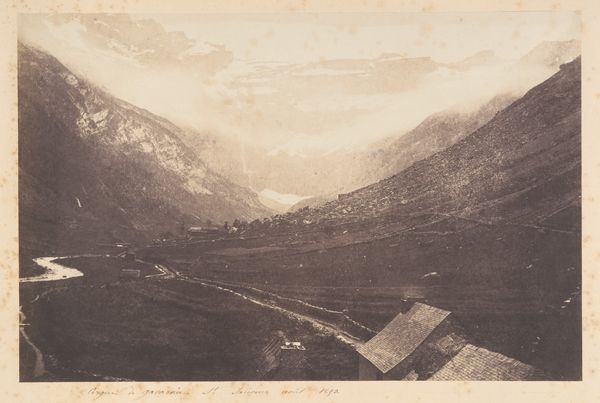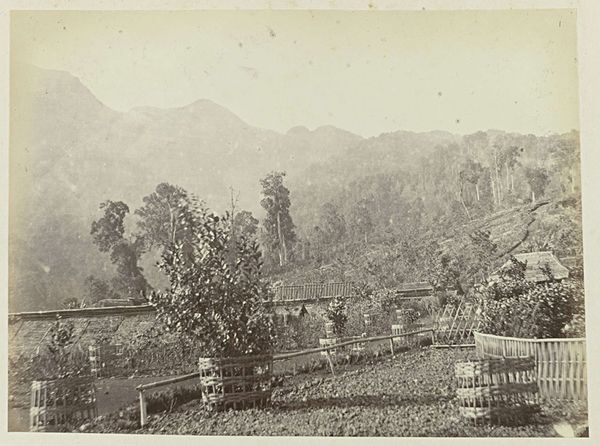![[View of a Broken Bridge at Nainital] by John Murray](/_next/image?url=https%3A%2F%2Fd2w8kbdekdi1gv.cloudfront.net%2FeyJidWNrZXQiOiAiYXJ0ZXJhLWltYWdlcy1idWNrZXQiLCAia2V5IjogImFydHdvcmtzLzFhMTgyOGM3LTZmMWUtNGI4ZS1hNGEwLWQxYTIwMTI0NzgzNC8xYTE4MjhjNy02ZjFlLTRiOGUtYTRhMC1kMWEyMDEyNDc4MzRfZnVsbC5qcGciLCAiZWRpdHMiOiB7InJlc2l6ZSI6IHsid2lkdGgiOiAxOTIwLCAiaGVpZ2h0IjogMTkyMCwgImZpdCI6ICJpbnNpZGUifX19&w=3840&q=75)
photography, gelatin-silver-print
#
landscape
#
photography
#
orientalism
#
gelatin-silver-print
#
realism
Dimensions: Image: 37.4 x 44.5 cm (14 3/4 x 17 1/2 in.)
Copyright: Public Domain
Curator: Looking at this gelatin-silver print by John Murray, dating back to the 1850s, what strikes you first about this photographic piece titled "[View of a Broken Bridge at Nainital]"? Editor: A sense of ruin, actually. The broken bridge, of course, implies that, but it's more than just the physical decay. There's an overall feeling of lost potential, or perhaps a connection severed. Even the building seems slightly forlorn. Curator: Murray was part of a wave of photographers in the 19th century who were documenting the landscapes and architecture of the British Empire, and specifically India. In its own way, photography served the empire, producing knowledge that bolstered the system itself. Nainital, located in the Kumaon foothills of the Himalayas, was rapidly developing into a resort destination for the British. Does knowing this social context alter your view of this image and its symbolism? Editor: It does deepen the symbolic layers. A broken bridge might speak to disruptions colonial development inflicted on indigenous structures, or to failed promise. Look how small the figures walking at the building look in the bottom right. The image itself conveys the scale of nature versus that of humanity—heightening awareness that there is a building placed on top of the slope with windows overlooking it. The photograph aestheticizes something "broken," imbuing a picturesque quality onto an object of human damage and colonial advance. Curator: Right, the picturesque aesthetic was incredibly popular at this time. I agree there's something unnerving about how the colonial gaze operated. The British, and other Western photographers, extracted scenes to feed notions of the Orient. A ruined building becomes something worth gazing at, worth displaying in albums back in England. This photo walks a tightrope between objective recording and subjective interpretation of colonial encounter. Editor: Exactly, and photography held unique authority in its supposed objectivity. However, its symbols and tone conveyed much more than what was merely depicted: the fragility of human endeavor when faced with the immense grandeur and also the harsh, dangerous impact on nature that it left behind in its path. Curator: Absolutely, thank you for bringing that symbolism out for our audience to explore more thoughtfully! Editor: My pleasure! It’s intriguing to think about how contemporary viewers interpret images created under such specific colonial dynamics.
Comments
No comments
Be the first to comment and join the conversation on the ultimate creative platform.
